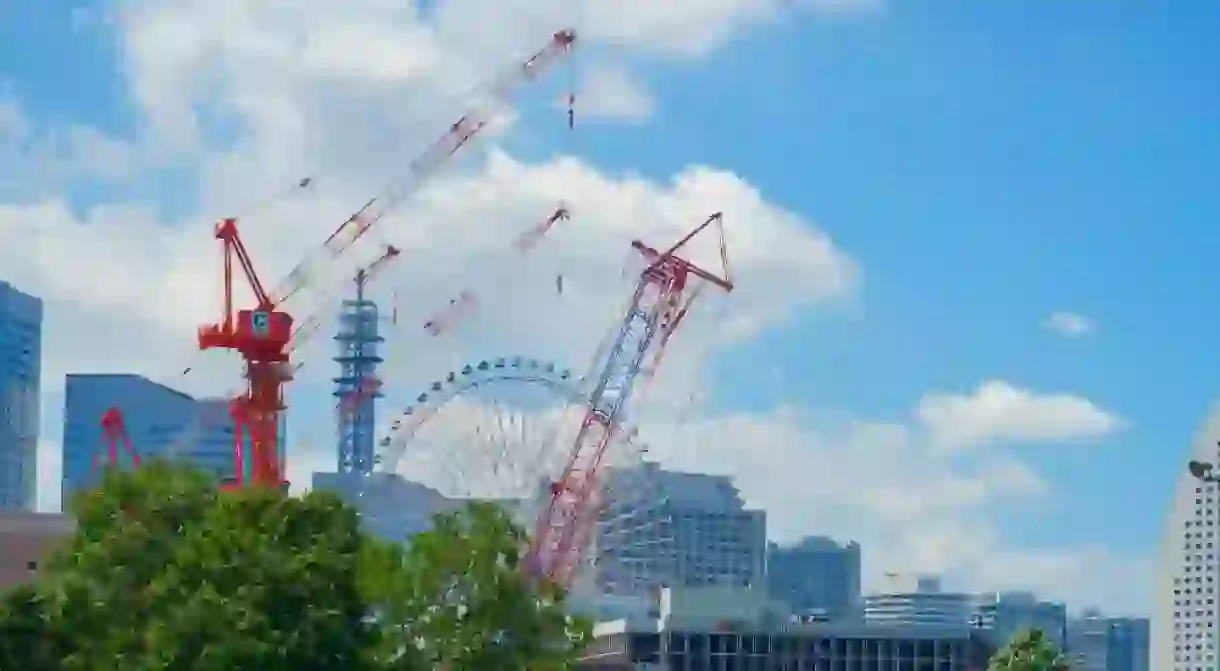The 8 Best Day Trips From Yokohama, Japan

With its soaring waterfront skyline, quirky museums and unsurpassable foodie scene, Japan’s second biggest city could easily consume days of your time all on its own. But with so many great destinations within easy reach, you’ve every reason to head out of town while you’re there.
Tokyo is less than an hour away; sun-kissed beaches, seaside onsen resorts and hilltop shrines a little further. Even Mount Fuji is within sight on a clear day. Yokohama is surrounded by a string of covetable spots that are well worth a day trip. From Kawaguchi and Kawagoe to Disneyland and Daishi temple, here are eight of the best.
Tokyo
Market

It’s impossible to discuss day trips from Yokohama without mentioning the capital, a 45-minute train ride away. Tokyo is one of the world’s must-visit cities, for so many reasons. There’s the ocean-fresh sushi at Toyosu fish market; the unrivalled nightlife of Shibuya; the sumo stables of the Ryogoku area; the Sensoji temple, built in 645CE; the soaring Tokyo Skytree and Tokyo Tower; fabled animal cafes on every corner; the fragrance of barbecuing yakitori on Piss Alley. Tokyo’s to-do list bulges, which is why it’s a holiday destination in its own right.
The last three days of our 12-day Japanese adventure will see you exploring Tokyo, from its fish markets to its karaoke bars.
Tokyo Disneyland
Amusement Park

The Happiest Place on Earth has a chapter just outside Tokyo that’s an hour from Yokohama by train. Tokyo Disney Resort comprises two parks: Disneyland, split into the classic Adventureland, Westernland, Fantasyland, Tomorrowland, Critter Country, Mickey’s Toontown and the World Bazaar, and DisneySea, which has seven ports. The parks are packed on weekends, so plan your day trip midweek. Sanrio Puroland is another major theme park just an hour away where you’ll find Hello Kitty in place of Mickey Mouse. The company that also came up with My Melody, Cinnamoroll and countless others opened this amusement park in 1990, a saccharine celebration of Japan’s culture of kawaii (cuteness).
Mount Fuji and Lake Kawaguchi
Natural Feature
This 3,776m (12,388ft) volcano is Japan’s biggest attraction, literally. The climb is arduous, not particularly beautiful, and you certainly won’t be able to do it in a day. Besides, the views are better from the bottom, where you can gaze across one of the Fujigoko, or Fuji Five Lakes. Two hours by bus or train from Yokohama, Lake Kawaguchi is the most accessible of these. When the cherry blossom is in bloom in April, or when the autumn leaves are ablaze in November, the view of Mount Fuji from the northern shore is dazzling. Adrenaline junkies flock to Fuji Q Highland and its record-breaking rollercoasters – Takabisha remains the world’s steepest, plummeting at an angle of 121 degrees – while the iconic red Chureito Pagoda, facing Mount Fuji, is in nearby Fujiyoshida City.
Hakone and Lake Ashinoko
Natural Feature

Just over an hour by train from Yokohama, Hakone is another easy day trip, in the shadow of Mount Fuji to the southeast. Zoom via the Hakone Ropeway from Souzan station over the Owakudani sulphur fields to Togendai station on the shores of Lake Ashinoko. From there, take a cruise on a “pirate” ship for unmissable views including – the money shot – the bright red torii gate, with Mount Fuji in the distance. The natural hot springs, lakefront Hakone shrine and the Hakone Open-Air Museum, a sculpture park dotted through the mountains, round off the perfect day trip.
Book a slot on our trip to Japan and you’ll spend a day exploring Hakone and a night staying in one of its traditional ryokan inns, where you can spend the evening relaxing in a steaming hot tub.
Kamakura and Enoshima
Buddhist Temple, Historical Landmark
Only a 25-minute train ride from Yokohama, Kamakura is the ideal spot for a beach break. Once the de facto capital of Japan, it earned a reputation as the Kyoto of the East for its collection of Shinto shrines and Buddhist temples that perch on the hills overlooking the Sagami Bay. The 13m (43ft) bronze Buddha at Kōtoku-in is the second biggest in Japan, while the Tsurugaoka Hachimangū temple, Engaku-ji, Hase-dera and Hōkoku-ji are definite must-sees. The beaches of Zaimokuza and Yuigahama are the other reason city slickers head here during summer, to swim, surf or swig cans of Strong Zero, while Enoshima, a sandy island a little further down the coast, is another popular spot in summer.
Atami
Train Station
Further along Sagami Bay lies Atami, the gateway to the Izu peninsula. A selection of traditional ryokan inns (as well as plenty of gaudy high-rises thrown up during the 1980s) make this an appealing overnight stop, or take the Bullet train for an easy day trip – Atami is a pacy 27 minutes from the Shin-Yokohama station. Besides the beach, Atami’s other big draw is its onsen, hot springs in the shadow of Atami Castle, a faux fortress built in the 1950s.
Kawagoe
Market, Park

Chichibu
Park













